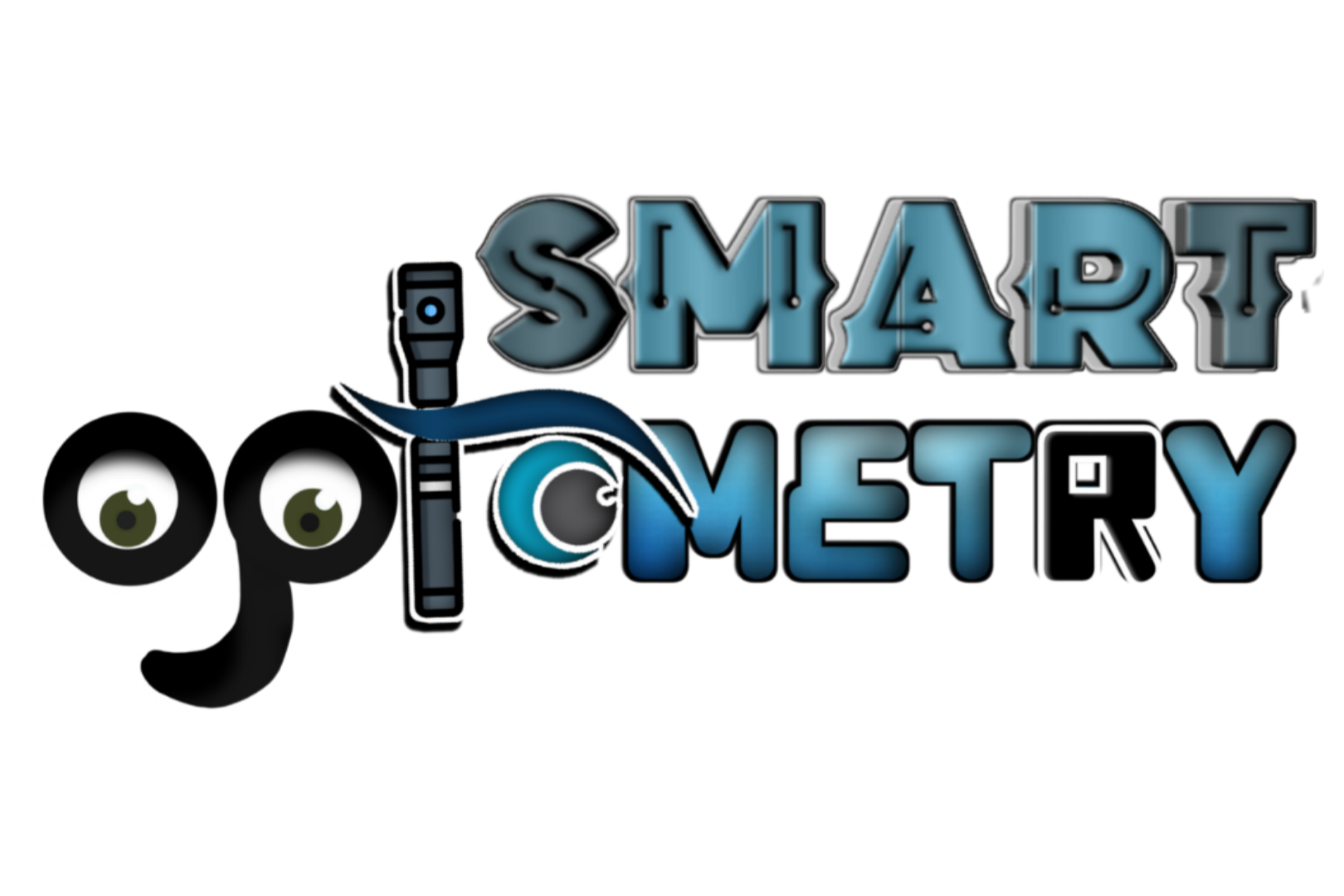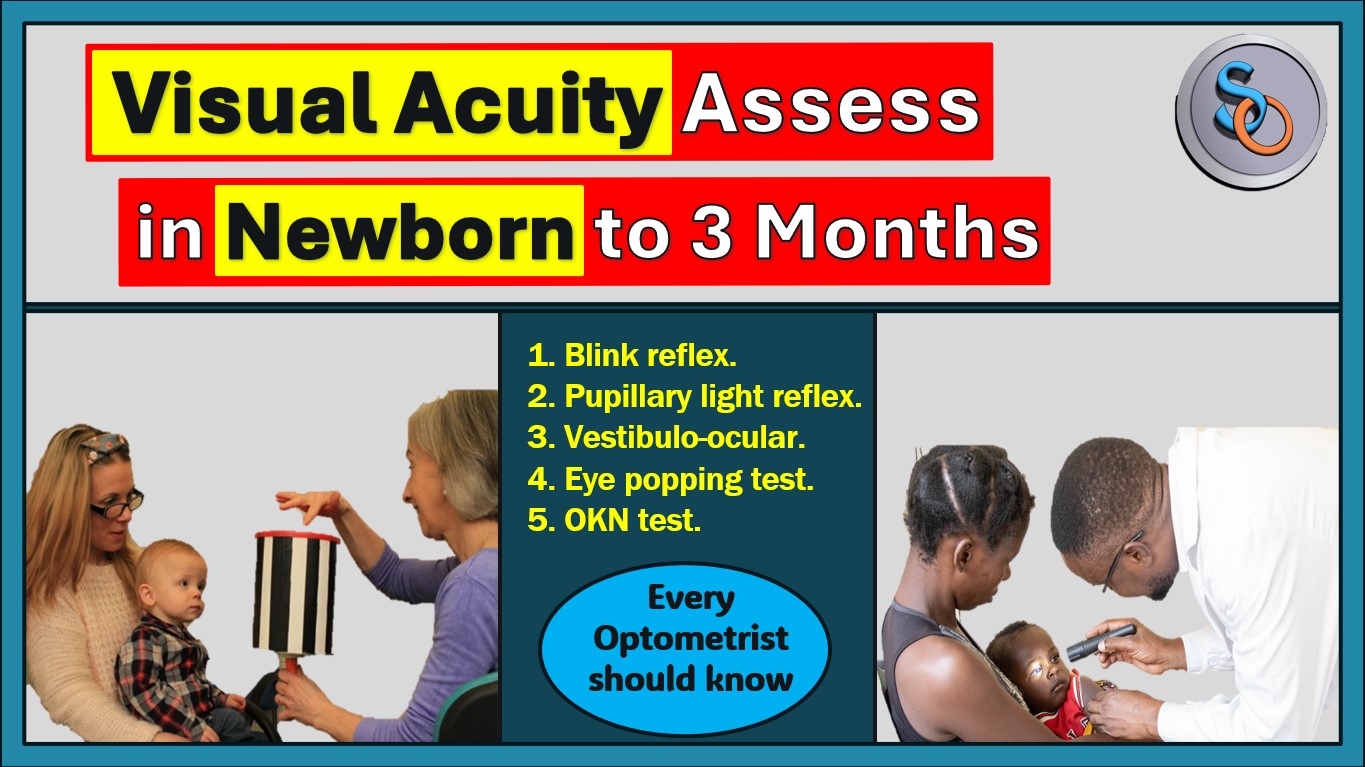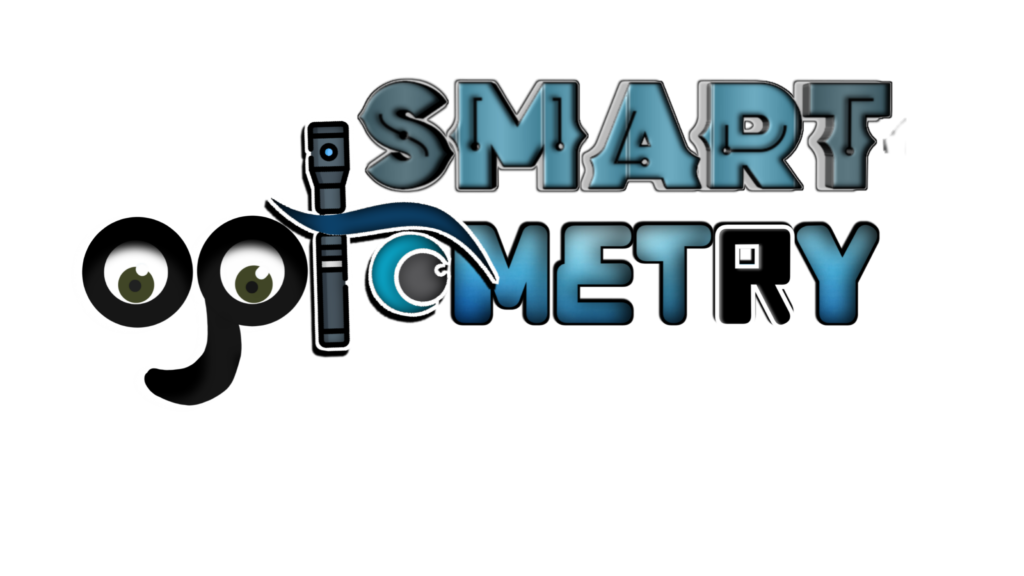- Assessment of visual acuity in newborn is easy as in adult as their visual acuity is very poor at this age.
- In newborns, visual acuity is initially low, approximately 1/60, but rapidly progresses.
- By one month, it improves to 2/60 and reaches 6/60 by four months.
- Even with 1/60 vision, newborns can focus on faces within 1 meter.
- However, it takes around 6-8 weeks for fixation and tracking reflexes to fully develop. Until then, infants may exhibit sporadic movements and have difficulty sustaining focus.
- Tests used to assess visual acuity in newborns up to three months old are:
- The blink reflex,
- Pupillary light reflex,
- Vestibulo-ocular reflex test,
- Eye popping test,
- Optokinetic Nystagmus (OKN)
1. The blink reflex test to assess visual acuity in newborn:
- During the test, the child sits on the mother’s lap or lies in bed.
- A bright light source, often a torch, is directed towards the child’s eyes.
- A normal response from an infant with normal vision is to blink when exposed to the bright light.
- Blinking in response to the light indicates a normal visual pathway.
- However, if the child does not blink or close their eyes when exposed to the bright light, it suggests a need to examine the posterior segment and visual pathway for potential issues.
2. Pupillary Light Reflex Test:
- During the test, light is directed into one eye, and the response of both pupils is observed.
- In a normal response, both pupils should constrict simultaneously, known as the Pupillary Light Reflex.
- The presence of this reflex indicates the normal integrity of both the afferent pathways (from the retina to the brain) and efferent pathways (from the brain to the iris sphincter).
- It’s considered the most reliable test for assessing the presence of vision, except in cases of cortical blindness.
3. Vestibulo-Ocular Reflex:
- During the test, the child’s attention is focused on an object, often a toy.
- While the child fixates on the object, their head is gently rotated or turned to the right or left.
- The observer then notes the response of the eyes.
- In infants with a normal visual system, the eyes will deviate in the opposite direction to the head rotation.
4. Eye Popping Test:
- The Eye Popping Test is a valuable evaluation method for assessing visual acuity in newborns. Here’s a brief explanation:
- During this test, the child is brought into an illuminated room.
- When the room lights are swiftly dimmed, a normal response is for the baby’s upper eyelids to momentarily open wide.
- Subsequently, when the lights are restored, the baby may close its eyes, but upon the lights being dimmed again, the upper eyelids should once more pop open.
- This behavior, known as ‘positive eye popping’, is indicative of a normal visual response.
- In contrast, in a child with impaired vision, the Eye Popping Test will yield a negative result.
5. Optokinetic Nystagmus Test:
- During the test, an Optokinetic Drum containing black and white strips is rotated in front of the child.
- A child with normal vision will attempt to fixate on the rotating drum. However, due to the movement of the black-white strips, a nystagmoid (jerky) eye movement occurs.
- These black-white strips come in various widths, with narrower strips eliciting a more pronounced nystagmoid eye movement.
It’s worth noting that OKN acuity in newborns is typically at least 6/120 and improves rapidly during the first few months of life. By 2 months, acuity may reach 6/60, by 6 months, 6/30, and by 20-30 months, it may reach 6/6.
- Check Our Courses: Ophthalmic Instrumentation, Clinical Refraction, Contact Lens, Binocular Vision, Dispensing Optics, MCQs in Optometry
- Download our App “Optometry Notes & MCQs” from Google Play Store.




